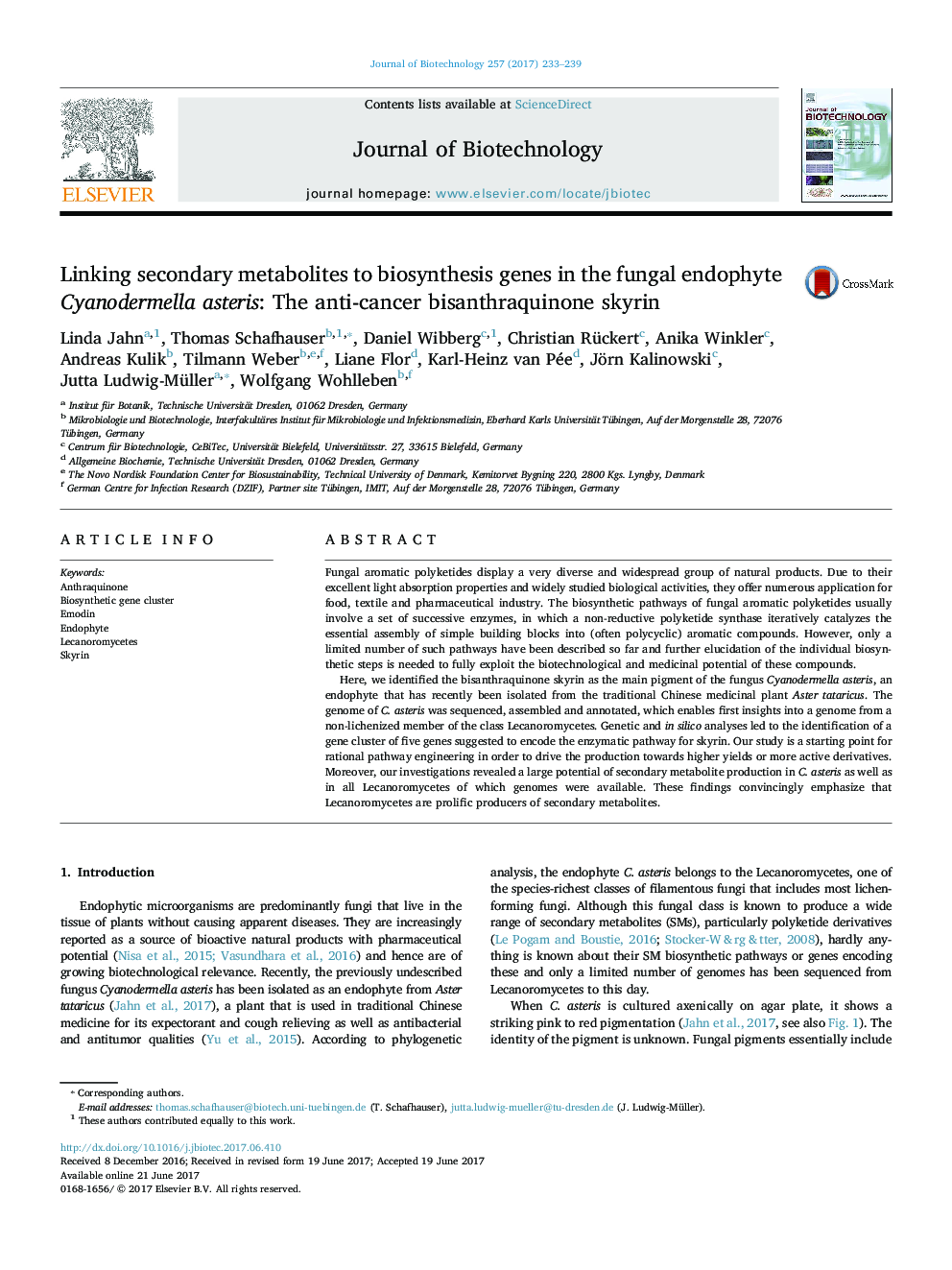| Article ID | Journal | Published Year | Pages | File Type |
|---|---|---|---|---|
| 6451934 | Journal of Biotechnology | 2017 | 7 Pages |
â¢The bisanthraquinone skyrin was identified as the main pigment in C. asteris.â¢A novel biosynthetic route to skyrin is proposed in C. asteris.â¢The first genome of a non-lichenized Lecanoromycetes strain is provided.â¢Lecanoromycetes harbor a high number of genes related to natural product synthesis.
Fungal aromatic polyketides display a very diverse and widespread group of natural products. Due to their excellent light absorption properties and widely studied biological activities, they offer numerous application for food, textile and pharmaceutical industry. The biosynthetic pathways of fungal aromatic polyketides usually involve a set of successive enzymes, in which a non-reductive polyketide synthase iteratively catalyzes the essential assembly of simple building blocks into (often polycyclic) aromatic compounds. However, only a limited number of such pathways have been described so far and further elucidation of the individual biosynthetic steps is needed to fully exploit the biotechnological and medicinal potential of these compounds.Here, we identified the bisanthraquinone skyrin as the main pigment of the fungus Cyanodermella asteris, an endophyte that has recently been isolated from the traditional Chinese medicinal plant Aster tataricus. The genome of C. asteris was sequenced, assembled and annotated, which enables first insights into a genome from a non-lichenized member of the class Lecanoromycetes. Genetic and in silico analyses led to the identification of a gene cluster of five genes suggested to encode the enzymatic pathway for skyrin. Our study is a starting point for rational pathway engineering in order to drive the production towards higher yields or more active derivatives. Moreover, our investigations revealed a large potential of secondary metabolite production in C. asteris as well as in all Lecanoromycetes of which genomes were available. These findings convincingly emphasize that Lecanoromycetes are prolific producers of secondary metabolites.
